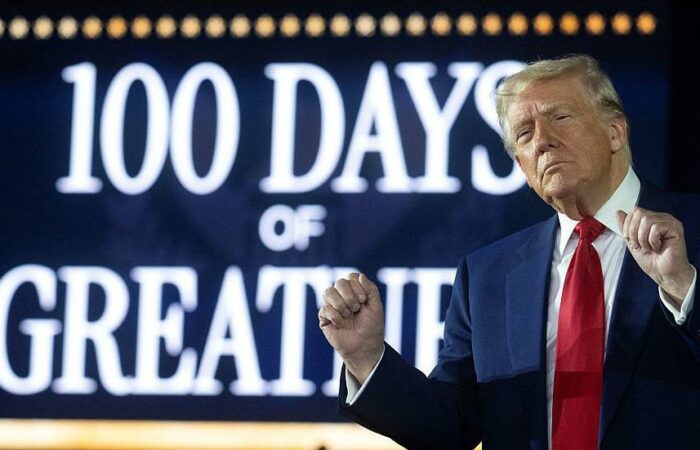Pierre Jaillet*
Inflation has been elevated in 2021-22 in Europe and elsewhere, driven by higher energy and food prices, from exogenous influences, but also driven by mark ups on profits more than by wage adjustments. However, the balance of risks remains relatively even, in the short-term, eventhough output growth is surrounded by uncertainties linked to geopolitics, the evolution of the Ukrainian conflict, or the possible impact of the Chinese recovery, especially on the prices of energy and raw materials. But more worrisome are long term influences that question the relevance of Europe in the global system and aggravate the internal divergences between member states. We discuss the short term outlook against the longer term challenges facing Europe and the Eurozone in particular.
The short term
The financial tensions we have witnessed, following the failure of two US Banks, Silicon Valley and Signature, and the troubles and eventual demise of Credit Suisse, have raised the spectre of a new financial crisis. However, European banks have been relatively preserved from market turbulence mostly due to a stronger regulatory framework than in the United States, and the strict application of Basel 3, after the global financial crisis. At the same time, the ECB’s March decision, to maintain the course of monetary policy normalisation, and thus raise interest rates by 50 basis points, worked as a signal of confidence and finally helped stabilise bank stocks and sovereign debt yields.
Looking back to the start of this inflation bout, however, the ECB’s and also the Federal Reserve’s late reactions, may now appear surprising. There was a sort of misdiagnosis of the nature of the shocks, which were perceived in the beginning as purely exogenous and transitory. While core inflation had been rising since the summer of 2021, the ECB waited until July 2022, to raise interest rates, which was a one year delay.
But the delay has been consequential. Given the relatively long lags in monetary policy transmission, estimated to between 12 and 18 months, the normalisation process had to be more violent and faster than if it had started earlier. This process is now exposing fragilities in a financial industry that has become accustomed zero or near zero interest rates and quasi free liquidity for long.
Aggregate fiscal policy remains broadly expansionary in the Eurozone, unlike in the United States. Hence, the monetary-fiscal policy mix is less convergent and less coherent in the Eurozone, where we have these large responses of member states to the triple shock of Covid, the Ukraine war and inflation. That of course illustrates once again the coordination flaws inherent in the current architecture of the European Union.
Long term challenges
Beyond these short term issues, Europe in general and the Eurozone in particular, are facing several long-term structural challenges: a declining potential growth; a relative decline in the global economy; growing divergences among member states; and flaws in policy coordination.
The EU’s potential growth dropped from about 2.4% in the 1990s, to 2% in the 2000s and to 1% between 2010 and 2022. This is mainly attributable both to demographics and falling productivity gains. This gradual but steady fall of potential growth is particularly worrisome against a legacy of high and in many cases rising debt-to-GDP ratios. As interest rates rise, the sustainability of debt will be questioned. Lower interest rates than economic growth, will tend to lower the debt-to-GDP ratio. Lower interest rates is what have allowed member states to sustain rising debt levels since the global financial crisis. But this trend is now reversing, and as interest rates remain higher than GDP growth, governments will have to reduce their primary deficits to maintain debt sustainability, thus curtailing their growth outlook and at the same time aggravating debt instabilities.
A second and related challenge, is Europe’s relative decline in the global economy. Since the early 1990s, Eurozone real GDP was growing at a much slower pace than in the US. As a result, real GDP more than doubled in the US while growing by slightly more than 50% in the Eurozone. This points to a growth gap against the United States of around one percentage point per year. The longer this persists, the more Europe’s relative position in the global economy will be shrinking.
A third reason for concern is the convergence dynamic which has reversed totally since the global financial crisis of 2008, and since the Eurozone crisis of 2010-12. This tends to validate Paul Krugman’s early argument that the European Monetary Union, instead of evolving towards an optimal monetary zone, would actually favour the polarisation of productive activities towards the areas or countries, best endowed with physical and human capital. The economies of the South have lost most of the ground they had gained before 2010. Even the major economies are dramatically diverging now. This is seen in the great diversity in per capita incomes across member states, including between large states. Between 2009 and 2022, per capita GDP in France and Italy lagged by 13% and 17% respectively, vis-a-vis Germany’s.
And, of course, the dynamic of public debts appears to be inversely correlated to the growth rate. This is not a perfect correlation because of the complexity of economic relationships, but the linkage is strong. For example, of the six countries with the lowest average growth rates in the period 2009-22, five had the highest ratios of debt to GDP.
Economic coordination
No one disputes the usefulness of having a common fiscal framework in the Eurozone. This has been suspended in 2020 in the wake of the Covid pandemic, but it is due to be re-established in January 2024. The question then arises, what fiscal framework should states return too? In a communication dated November 2022, the European Commission has proposed to make the fiscal framework simpler, more transparent, and more flexible in order to encourage the return of fiscal ownership to the member states. The idea is, according to these proposals, that the member states would set government spending targets compatible with maintaining or returning debt to a sustainable path. The operational variable of course, which will be crucial in the new mechanism, as proposed by the Commission, will be the primary expenditure.
Certainly, the current fiscal framework needs to be reformed. But the Commission’s proposal for a new fiscal framework, may make it even more complex, and less comprehensive than the current one, leading to a kind of re-nationalisation of the framework altogether. Above all, the Commission proposals avoid the fundamental issue of the dys-functioning of the economic branch of EMU. Jacques Delors, the former President of the European Commission, had said as early as in 1989, that the economic branch of EMU was its Achilles Heel. The current framework, as already said, cannot provide a common fiscal stance, in the face of the ECB’s monetary stance, and so it cannot ensure a consistent policy mix. Ensuring a consistent policy mix in the Eurozone, would require less of an inter-governmental and more of a federal model of policy coordination. This idea was in fact proposed as early as 2015, by the so called five presidents report for completing Europe’s economic and monetary union. Its implementation remains elusive since.
Conclusion
Europe faces short term issues. The current inflation problem has initially been misdiagnosed, and monetary tightening has been delayed. In consequence the monetary tightening that followed has been more violent, exposing financial vulnerabilities that were hidden by a long period of favourable monetary conditions. At the same time, the lack of an effective policy coordination framework makes the monetary-fiscal policy mix in the Eurozone less coherent. In the longer term, Europe faces multiple challenges epitomised in slowing potential growth, a declining relative position in the global economy, and growing divergences among member states. Policy coordination remains flawed by the absence of a federal policy framework which unfortunately, governments are not willing to propose.
*Pierre Jaillet is Associate Research Fellow at the Jacques Delors Institute and at the Institute of International Strategic Relations, in Paris, and former Director General Economics and International Relations, Banque de France. This article is an edited summary of an online discussion organised by the Cyprus Economic Society on 23 March 2023




